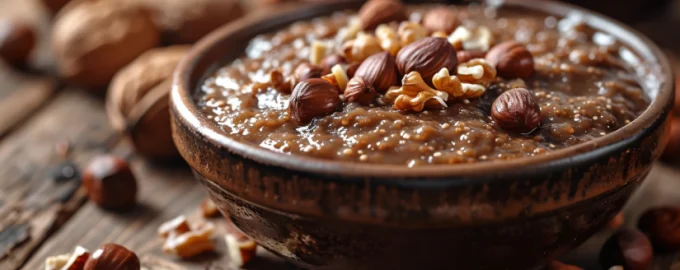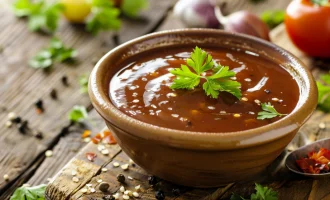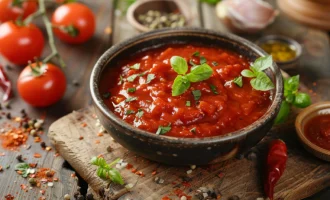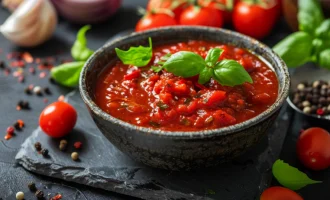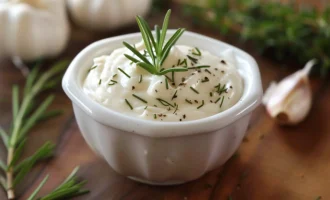Nut sauce, particularly walnut sauce, has a rich history that spans various cuisines around the world. In Georgian cuisine, it’s known as “Satsivi,” served with poultry and fish, and in Italian cuisine, particularly from Liguria, walnut sauce is a traditional accompaniment to pasta, such as “Pansotti,” a type of stuffed pasta similar to ravioli. Nut sauces are celebrated for their creamy texture and depth of flavor, providing a hearty, vegetarian-friendly option for enriching dishes. The use of nuts in sauces can be traced back to ancient times, utilized for their flavor and as a protein source, showcasing the versatility and nutritional value of nuts in culinary traditions.
- Walnuts 200 g
- Garlic 2 cloves
- Fresh bread crumbs 50 g
- Grated Parmesan cheese 50 g
- Olive oil 60 ml
- Milk or vegetable broth 100 ml
- Salt to taste
- Ground black pepper to taste
- Fresh herbs (optional, such as parsley or basil) 10 g
- Toast the walnuts in a dry skillet over medium heat for 3-5 minutes, or until fragrant. Be careful not to burn them. Let them cool slightly, then finely grind them in a food processor or blender.
- Add the minced garlic, soaked and squeezed bread crumbs, and grated Parmesan cheese to the ground walnuts in the food processor. Pulse to combine.
- While the processor is running, slowly drizzle in the olive oil, then gradually add enough milk or vegetable broth to achieve a smooth, creamy consistency. The amount may vary depending on the desired thickness of the sauce.
- Transfer the sauce to a bowl. Season with salt and ground black pepper to taste. If using, stir in the finely chopped fresh herbs for added flavor.
- Nut sauce can be served at room temperature or gently warmed over low heat, being careful not to let it boil. It’s traditionally served with pasta, grilled vegetables, or as a condiment for grilled meats or fish.
Storage Tips
Nut sauce can be stored in an airtight container in the refrigerator for up to 3 days. If the sauce thickens upon chilling, it can be thinned with a little milk or broth when reheated.
Useful Properties of the Main Ingredient
Walnuts are rich in omega-3 fatty acids, antioxidants, and phytochemicals, which are beneficial for heart health, brain function, and reducing inflammation. They are also a good source of protein and fiber.
Interesting Facts
- In addition to their use in sauces, walnuts have been consumed for their nutritional value since ancient times, with evidence suggesting they were a staple in the diets of many early civilizations.
- The process of using nuts to thicken sauces and soups is a technique that has been utilized in various cultures, demonstrating the global appreciation for the flavor and nutritional benefits of nuts.
- Walnut sauce, due to its rich and creamy texture, is often used as a dairy-free alternative to cream-based sauces, offering a flavorful option for those with dietary restrictions.
This recipe for nut sauce with walnuts offers a rich, savory option for enhancing a wide range of dishes, from pasta to grilled vegetables, providing a delicious and nutritious way to enjoy the inherent flavors and health benefits of walnuts.

